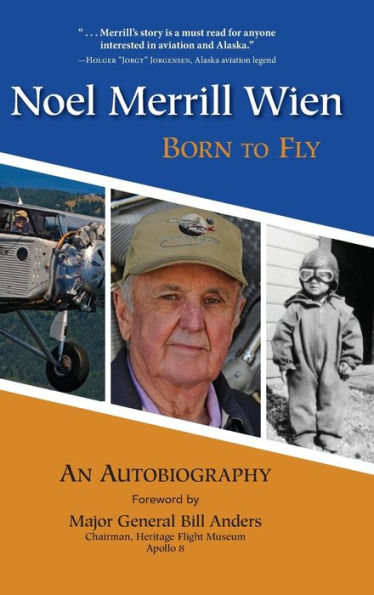One of the most versatile and experienced pilots of his time, Merrill has flown just about every aircraft imaginable from DC-3s to Lockheed 1011s to historic military planes like the cargo C-46 and B-29 bomber to the Hiller UH-12E chopper. Although fundamentally modest by nature, family and friends encouraged Merrill to share his remarkable stories given his accomplishments and experiences with so many famous people and events. His tone is engagingly informal as he recounts crossing paths with such luminaries as Joe Crosson, Howard Hughes, Lowell Thomas Sr. and Lowell Thomas Jr., Sam White, Don Sheldon, Brad Washburn, Wally Schirra, and Bill Anders. He re-creates for readers his firsthand experiences flying top-secret missions for the Air Force, viewing the devastation of the Good Friday Earthquake in Anchorage, and the challenges of starting his own helicopter company, to name just a few. His fascinating narrative is complemented by photographs from his personal archives.
One of the most versatile and experienced pilots of his time, Merrill has flown just about every aircraft imaginable from DC-3s to Lockheed 1011s to historic military planes like the cargo C-46 and B-29 bomber to the Hiller UH-12E chopper. Although fundamentally modest by nature, family and friends encouraged Merrill to share his remarkable stories given his accomplishments and experiences with so many famous people and events. His tone is engagingly informal as he recounts crossing paths with such luminaries as Joe Crosson, Howard Hughes, Lowell Thomas Sr. and Lowell Thomas Jr., Sam White, Don Sheldon, Brad Washburn, Wally Schirra, and Bill Anders. He re-creates for readers his firsthand experiences flying top-secret missions for the Air Force, viewing the devastation of the Good Friday Earthquake in Anchorage, and the challenges of starting his own helicopter company, to name just a few. His fascinating narrative is complemented by photographs from his personal archives.

Noel Merrill Wien: Born to Fly
210
Noel Merrill Wien: Born to Fly
210
Product Details
| ISBN-13: | 9781943328758 |
|---|---|
| Publisher: | TURNER PUB CO |
| Publication date: | 05/13/2016 |
| Pages: | 210 |
| Product dimensions: | 5.90(w) x 9.10(h) x 0.70(d) |
